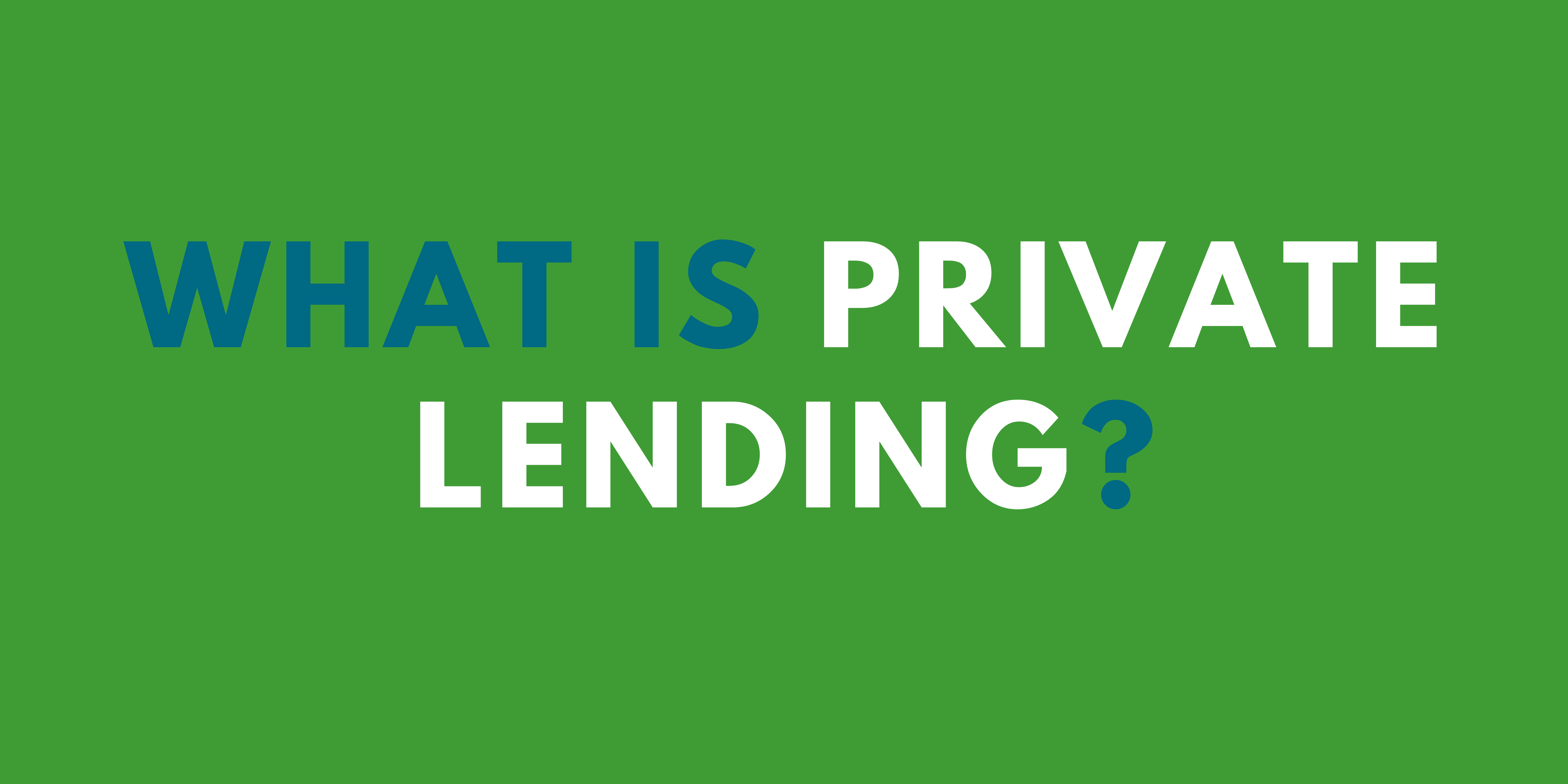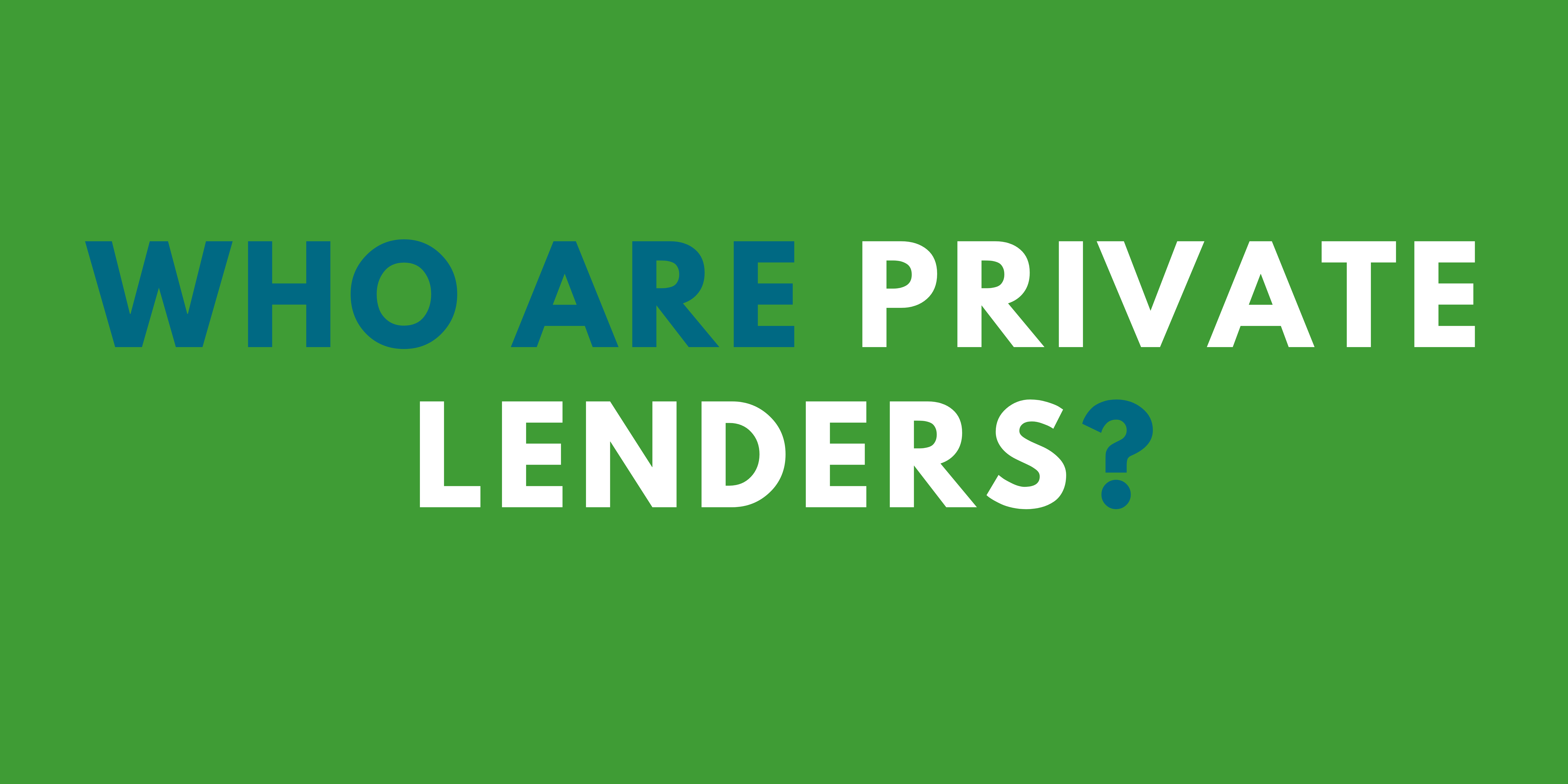What is private lending, who are these lenders and who are their clients?
Adapted from an article written in The Adviser https://www.theadviser.com.au/lender/42889-breaking-the-mould
But first, some background
Private lenders…. The term might conjure up all sorts of images! In an industry which has historically been dominated by the Big 4 banks, there is increasing pressure on the Big 4 and this pressure is coming from all sorts of angles.
Historically, the potted history of lending comes across as a bit of a whirlwind when done in a couple of paragraphs.
Back in the 1980’s, Keating led the deregulation of the banking industry to remove the obstacles which entrenched the position of the major banks whilst restricting competitive forces. As a result of deregulation, there has been a significant growth in the number of APRA-licensed banks – for example, in June 2022, there were over 80 Australian-owned authorised deposit-taking institutions, 7 Foreign subsidiary banks and 49 branches of foreign banks!!! That’s a lot of banks for a country with less than 30 million people!!!
With economic peaks and troughs, this list has moved around a lot of banks that have joined then exited the industry.
Around this same time, there was also rapid growth in the specialist lenders market as some entrepreneurial individuals realised that a lot of borrowers were not catered for by the banking sector. These lenders made their name in the higher risk end of the market before gradually moving towards the domain of the banks. They also catered for individuals as well as businesses.
Then, with the growth of the internet and broadband, there came the fintechs – lenders who allowed consumers to transact over the internet. Surely, we are seeing the last days of the cheque book! On the internet, there has been a focus on processing simple-to-write consumer property loans and now personal and asset-backed loans. Interestingly, after the fintech start-ups jumped to an early lead, the big banks are now acquiring quite a few of them in what is one of the classic business strategies ‘it is cheaper to buy than to make’ – creating a win/win as the start-ups have probably been paid a very pretty multiple and the big banks have fast-tracked their way into this new niche.
And so, this takes us to another niche, the one I want to talk about today – the private lenders. Lenders who don’t want to lend to consumers because of the consumer borrowing red tape but who can, with knowledge of the right factors, lend to what would typically have been regarded by the banks as high-risk clients.
While private lenders were once seen as a last resort due to the high risks associated with their clients, they are now seen as offering finance options to businesses that would otherwise miss out on major opportunities.
The dominance of mortgage industry players has traditionally been steered by consumer sentiment and what is happening in the economic landscape.
The search for more tailored products, greater flexibility, and closer relationships with their lender partner saw non-banks come to the fore, including private lenders.
Despite the similarities of the pandemic with the GFC, the last two years have put immense pressure on the banking industry, resulting in restricted lending as credit appetites tightened up at the major banks.
This systemic issue, coupled with continued demand for lenders that provide borrowers with the flexibility needed, has allowed private lenders to step up and fill an important finance gap embraced by consumers.
What is private lending?

Private lending, also known as peer-to-peer lending, occurs directly between individuals. For the investors, it provides the opportunity to make a higher return than rates offered by other investments. For the borrowers, it allows them to receive funding if they do not qualify for conventional loans.
Private lenders still have to abide by similar laws, regulations and rules as banks, from the Australian Securities and Investments Commission (ASIC) to the National Consumer Credit Protection laws and Australian Consumer Law. However, while there are many rules that compel non-bank lenders to comply with legal and industry policies, private lenders don’t hold a banking licence; and thus, they don’t have the same level of APRA-regulatory pressure.
In most cases, private lending is primarily for business purposes and is classified as “unregulated loans”, in which case it does not fall under the National Consumer Credit Protection Act.
Who are private lenders?

Private lenders are often wealthy private individuals or companies that have excess cash from their main area of business and which are seeking to earn a higher return on their excess funds. Consequently, they have a higher risk appetite than traditional lenders (but this risk is not unlimited!).
Michael Volkiene, the CEO at idutch, a platform which brings together brokers and private lenders, explains: “Private lenders source their funds primarily from two different sources, one is investors and two is their own warehouse facilities. A private lender will take more risk based on the strength of the project rather than, I suppose, historical financial analysis.”
As the transactions are subject to higher interest rates, it is also often a short-term contract to enable the borrower to get projects up and running quickly, before moving to a traditional bank.
Platforms like idutch complete a “thorough due diligence” process before allowing a lender onto its panel of private lenders. “We vet their loan agreements, we also physically do site visits…we look through past transactions in terms of completed transactions, [and then] we do reference checking,” Mr. Vokiene says.
The platform works similar to a “dutch auction”, from which its name was derived, Mr Vokiene reveals.
Through the portal, brokers can list their clients’ requirements, such as the loan size and presale limit for a development, and the lenders on the panel can then bid for the business. The platform ranks the most suitable private lenders and facilitates an introduction.
“It creates a competitive furnace, where they bid for people’s business both on cost or price, in terms of interest rates and fees, but also on lending terms and conditions,” Mr . Volkiene says. “It’s not just about price, it’s certainly a combination of lending conditions which suit your borrower which they can ultimately meet, [and] the speed in the time in which they can do so. But then also achieving a really good value scenario where you’ve got lenders actively bidding against one another, to increase competition to produce the best possible outcome for the end-user.”
Whether it’s first, second mortgages, other bridging products or larger complex lending structures, demand for private lending has been booming. Mr. Volkiene says “In terms of the overall market, we believe it’s a $41 billion market in the private lending space in Australia, and growing at the rate of [around] 8 per cent per annum.” He adds that the pandemic has “pushed” traditional lenders to change the way that they look at historical servicing and provided new opportunities for private lenders.
“What [the pandemic] has done is provide an opportunity for private lenders to understand specific needs at a point in time, what the customer is trying to achieve, and understanding how they’re going to achieve those goals,” Mr. Volkiene says.
As interest rates start to increase, additional pressure will be placed on traditional lending, covenants and gearing positions, which will increase opportunity in the private lending space, he explains. “If you’re talking about almost the perfect environment for this industry to grow, we’re certainly seeing it,” Mr . Volkiene continues. “With the acceptance and uptake and use of private lenders, [brokers are] getting to know who the really good ones are and seeing that it’s a really good outcome for the customer.”
As traditional, non-banks and private lenders are all competing for a slice of the $347 billion business loan market, private lenders are showing their competitive edge through flexibility and quick turnaround times. Mr. Volkiene outlines that private lenders can typically settle a loan between seven to 14 days.
“From the clients’ perspective if you’ve got a tight settlement deadline, banks may or may not be able to move quickly enough to fill that void,” he states. “The other place that we really satisfy the needs of the market… is taking a second mortgage, where traditional lenders might be capped at a certain loan-to-value position. [Private lenders have] the ability to come in and provide mezzanine finance or a second mortgage over and above that, which gets that business owner into that property for a short term.” That debt can be reduced over a period of time, or the borrower improves the property and has it revalued so it matches the main bank lender’s LVR.
Who are private lending clients?

Typically, private lending clients are property developers or investors. “Customers who have committed to projects [and] are at the stage where potentially they’re going to lose their deposit because they may not have the finances, perhaps squared away as well as they thought they might,” are particularly popular customers, according to Mr. Volkiene. He adds that he sees business owners, developers with limited experience, and property owners all upscaling. “Somebody who owns a property unencumbered, who wants to put two townhouses or two duplexes on their property, but they don’t have pre-sales. [Or] customers that want to purchase a warehouse… [and] acquire the business in total,” Mr. Volkiene says. “That’s the customers that [we’re] seeing. For example, if a client is doing a development, and unable to go directly with a traditional bank but is able to demonstrate they can run a successful development with the end result of sales, then private lenders are “potentially” less concerned with presales”, the idutch CEO says.
“[The client] will use a private lender up until the point where they [are] attractive to main banks… [And then] will refinance back into a traditional banking lender scenario,” Mr. Volkiene says. “So, it’s more about… the opportunity is forfeited if you don’t complete [the project] – that’s the mindset of small business owners.”
Private lenders are also gaining popularity among customers who are of “considerable net worth” who want to get a “higher” return on their cash, according to the idutch CEO.
An increasingly common private lending segment is also now emerging as a result of the COVID-19 pandemic. While the pandemic has put immense pressure on Australian businesses, it has created opportunities for many strong-performing businesses, to take advantage of government incentives and seek finance to acquire other companies.
Mr. Volkiene notes that there has been a strong uptake in acquisitions during the pandemic. “COVID has been incredibly challenging for a lot of small businesses in Australia, but what that has done is create opportunities for some people within their sectors to acquire those businesses,” Mr . Volkiene says. “We’ve done a number of those transactions… The natural competitor has seen an opportunistic acquisition and, via the use of private lending, has been able to make that happen in a very short timeframe.”
A broker’s point of view

Broker Abhishek Maharaj at Winquote SME Finance has been using private lenders for his clients, often finding niches for complicated scenarios. As an example, he says brokers are frequently turning to private lenders as the major banks and first and second-tier lenders “move away” from development finance. “It’s really the market pressure that’s moved us to look at alternative solutions,” Mr Maharaj says. There is definitely a space for these types of products, the ease of getting organised and done is definitely a lot better than having to struggle with other types of solutions. “From our perspective, it really adds value to our business and a lot of our customers that go into private lending, they know what they’re doing, because most of them are developing and selling… [so] it’s just a shorter-term solution.”
Mr. Maharaj says as the pandemic has brought increased competition in the market, it has also fueled better marketing that has created more acceptance of private lenders when discussing the options with his clients.
“There’s a lot more information out there, which certainly helps us to diversify to not just the traditional banking solutions,” he continues.
The benefit of platforms like idutch is that they give brokers – and their clients – peace of mind. “In every aspect of lending there are your good lenders and your not-so-good lenders, but that’s where idutch has helped us because they’ve pre-vetted a lot of lenders, and that’s what gave us the confidence to use their platform,” Mr. Maharaj says. “In private lending, there’s certain lenders that like different types of developments, so, depending on preference of the project, or what the project looks like, it is very important for us to have that guidance from idutch. It’s a platform that puts the deal to a number of lenders and allows them to choose if they want to do the deal, as opposed to us chasing 10 different people.”
Whether it’s a short-term shift due to current market pressures, [it’s] evident competition in the private lending sector has bolstered during the pandemic. While some hesitancy might remain, players are earning their stripes in the commercial lending market, giving traditional lenders a run for their money.
Would you like more information? You can ring us now 1300 989 878 or email us at moreinfoplease@bir.net.au


